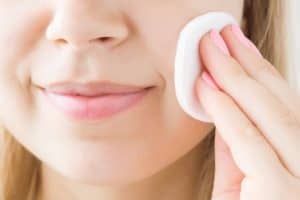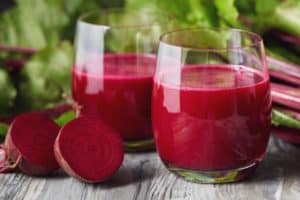There’s a lot of information out there on how you can slow down the aging process of your skin, such as using anti-aging products to reduce fine lines and wrinkles.
There is also a lot of information out there on what foods you can eat to slow down the aging process from the inside out, at a cellular level. In this article, I’m going to discuss how your diet affects your skin.
Your diet affects your skin base on the number of advanced glycation end-products (AGEs) in your body. The more AGEs you have, the worse your skin will be. To avoid AGEs, eat lots of fruits, vegetables, and nuts, preferably raw. Also, cook your food low and slow.
In this post, I will talk about how to slow down the aging process. I will also discuss more about AGEs that aren’t very well-known, but very important… not only in reducing the appearance of fine lines and wrinkles in the skin but also in slowing down the overall aging process.
Read on to learn more about how your diet affects your skin and how you can eat for healthier and better-looking skin!
Also, for an excellent water filter system, take a look at our top pick, the APEC Water Systems ROES-PH75 Essence Series :
Click here to see it on Amazon.
How Your Diet Affects Your Skin
Advanced Glycation End-Products (AGEs) Explained
First, let me explain how the aging process works. In our 20s, 30s, 40s, and 50s, our bodies start to accumulate advanced glycation end-products (AGEs). AGEs have been linked to degenerative disorders in the body, as well as various other diseases and disorders.
For example, people with diabetes have been found to have a high amount of AGEs in their bodies. AGEs accumulate over time, so the older we get, the more AGEs accumulate in our bodies.
AGEs are correlated not only with internal diseases and disorders but also with skin diseases and issues, such as acne, hyperpigmentation, psoriasis, eczema, rosacea, and even skin cancer. AGEs affect the skin by causing the major proteins in our skin to break down.
Also, AGEs decrease collagen production, causing the skin to lose elasticity—its buoyancy, bounciness, and plushness—and start to sag. Also, as the skin becomes stiffer, irregular striations (fine lines and wrinkles) start to form on its surface.
Studies show that glycated collagen can form in our bodies as early as in our 20s, although this depends on how we take care of our skin, the environmental pollutants, sun exposure, stress, and diet.
AGE can accumulate at a rate of 3.7% annually, and by the time we are in our 80s, it will have increased up to 30 to 50%.
Aging Through the Years
This is what aging looks like: In our 20s, we start to notice really fine lines that appear when we make certain facial expressions, like when we’re surprised, draw our brows together or smile, and they disappear when we relax our faces. In our 30s, we may start to notice more tiny changes again.
The really fine lines we had in our 20s have now become more noticeable. From our mid to late 30s, these fine lines will have turned into very, very small wrinkles. In our 40s, what happens, especially in women, is that hormones start to fluctuate.
Some women will experience mid-life acne, and some women will start to find or notice that not only are their fine lines becoming more pronounced, but they’ve also now turned to wrinkles, and some age spots will have formed as well.
Signs of aging around the eyes are also very common, including bags, puffiness, and darkness under the eyes. Finally, in their 50s, estrogen production decreases until it stops.
Estrogen supports the production of collagen. So as estrogen levels start to decrease, women will start noticing more fine lines and wrinkles because now their skin lacks elastin, including more age spots, especially if they were out in the sun a lot when they were younger.
Our skin also becomes drier as we age, which leads to sagging skin.
See the below video for more healthy skin diet tips:
Cook Your Own Food!
So how do we slow down the effects of aging? I’m going to share with you an amazing anti-aging secret: cooking your own food! This will actually reduce the amount of AGE in your body, so take good note of these cooking tips, as you might want to incorporate them in your own cooking.
For those who are in their 20s and 30s, you should start as early as you can because AGEs accumulate over time.
The earlier you start, the younger your skin will look. Remember that as we age, our bodies are affected not just by stress, sun damage, and the foods that we eat but our hormones as well.
So if you can prevent that, the better your skin will be. If you are already in your 40s or 50s, you can still prevent the future accumulation of AGEs through the way you cook your food.
Cook with Low and Slow Heat
Almost all foods have some sort of AGE, so the ideal way to reduce the amount of AGE is to eat lots of fruits, vegetables, and nuts, preferably raw.
However, eating a raw diet may not be ideal for everyone, so here are some cooking methods that you need to practice, as well as some other cooking methods that you want to avoid.
The first technique is to use a slow cooker more often, on low to medium heat. The slow cooker cooks your food over a longer period at low heat, which prevents excessive browning or heat.
The higher the heat, the higher the AGE content. This means frying, broiling, roasting, and grilling should be avoided.
On the other hand, boiling, steaming, and poaching your food can all reduce the number of AGEs in your food. Another tip is marinating your meats in lemon juice or vinegar. This softens or tenderizes the protein, which reduces cooking time, and thus, the AGE content.
Foods to Include and Exclude
Also, you want to introduce more foods that don’t cause glycation, such as foods that are high in vitamin A and beta-carotene. Some examples of these are carrots, pumpkin, kale, spinach, and cantaloupe.
Introducing foods that are high in vitamin C is also good. This includes Brussels sprouts, broccoli, and citrus fruits.
Foods high in vitamin E, such as carrots, olive oil, oats, and tomatoes, reduce glycation too. Look for antioxidants—foods that are high in vitamin A, vitamin C, and vitamin E.
You also may benefit from reducing your intake of fatty meats, fatty foods, processed foods, and full-fat dairy products.
See the below video to learn how the right food can get rid of acne:
Consume Bioflavonoids and Polyphenols
Another thing that you must look out for is bioflavonoids. Bioflavonoids help increase the efficacy and the absorption of vitamin C. They are found in berries, dark chocolate, and sea buckthorn.
Polyphenols are also good antioxidants. They come from plants and are what make plants green.
Some foods that contain a high amount of polyphenols are berries, dark chocolate, and teas, both black tea and green tea, although green tea has a higher amount of polyphenols because of its green color.
Some foods that contain a high amount of polyphenols are berries, dark chocolate, and teas, both black tea and green tea, although green tea has a higher amount of polyphenols because of its green color.
Conclusion – How Your Diet Affects Your Skin
How your diet affects your skin is a complicated question to answer. In general, your diet affects your skin base on how many advanced glycation end-products (AGEs) that you have in your body.
Your skin will be worse if you have too many AGEs. Eat lots of fruits, vegetables, and nuts, preferably raw, to avoid AGEs. Also, make sure to cook on low heat and slowly.
There is a myth that you don’t need to start dealing with anti-aging in your 20s because you’re still too young, but if you are eating foods that are high in sugars and if you are cooking your meats at high temperatures, you will most likely have a high accumulated AGE.
This means not only that your body is prone to various diseases but also that your skin will age faster.
There are many ways you can slow down the aging process. The first one is by managing what you eat. We are what we eat because our skin cells and the proteins in our skin are made up of what we eat.
Therefore, we can prevent aging by managing what we eat and how we cook our food, as well as through the antioxidant products that we use on our face.
Related Questions
What food makes your skin glow? Some of the foods that help make your skin glow include:
- Coconut oil
- Flax seeds
- Mangoes
- Foods high in vitamin C
- Cocoa powder
- Avocados
- Salmon
- Filtered water (like with the APEC Alkaline Mineral Filter System that I personally use) or a faucet filter like the Engdenton Faucet Water Filter:
Click here to see it on Amazon.
Click here to see it on Amazon.
What foods are bad for your skin? Some of the foods that are bad for your skin include:
- Excess caffeine
- Excess alcohol
- White bread
- Popcorn
- Sugary foods
- Fried foods
What can I drink to clear my skin? Some of the drinks that will help benefit your skin include:
- Carrot juice
- Matcha free tea
- Red wine (in moderation)
- Green juice such with, for example, spinach, kale, and cucumber
Juicing can be a pain if you don’t have the right equipment. I use the Breville JE98XL Juice Fountain Plus.
Click here to see it on Amazon.
Out of many juicers I’ve tried in my life, this one is the easiest to use and clean. I also recommend, if you are new to juicing, to read the inspiring health transformation story:
What supplements to detox are best? Here are some supplements that are good to take to help detox your body. A detox period should be temporary, done from time to time, where you abstain from or rid your body of toxic or unhealthy substances.
BioEmblem Turmeric Curcumin
Click here to see it on Amazon.
Jarrow Formulas Milk Thistle
Click here to see it on Amazon.
Hormone Synergy S-Acetyl Glutathione Ultra
Click here to see it on Amazon.
Hormone Synergy NAC N-Acetyl Cysteine
Click here to see it on Amazon.
Doctors Best Alpha-Lipoic Acid
Click here to see it on Amazon.
Dual Health Pure MSM (Methylsulfonylmethane) Powder
Click here to see it on Amazon.
Micro Ingredients Organic Chlorella Spirulina Powder
Click here to see it on Amazon.
Smart Solutions Activated Charcoal Powder
Click here to see it on Amazon.
What books to read for eating better for your skin: The books that I recommend to eat better for your skin include:
The Whole30: The 30-Day Guide to Total Health and Food Freedom: A way of eating that eliminates certain food groups (sugar, grains, dairy, and legumes) that could be having a negative impact on your health (acne) without you even realizing it.
Click here to see it on Amazon.
The Whole30 helps to eliminate the most common blood sugar disrupting, gut-damaging, inflammatory food groups for 30 days.
Although people report significant improvements in all aspects of their health (weight loss, better sleep, more energy, etc.), more serious or chronic health conditions, including digestive issues or acne, may take longer than 30 days to heal. This diet is like pressing the reset button on your health.
Gut and Psychology Syndrome: Similar to Whole30, the GAPS diet, also known as the Gut and Psychology Syndrome Diet, was originally created by Dr. Sidney Valentine to naturally treat chronic, inflammatory conditions in the digestive tract as a result of a damaged gut lining.
Click here to see it on Amazon.
The GAPS protocol restricts all grains, processed carbohydrates, starchy vegetables, and dairy to heal the gut lining, rebalance the immune system, and restore the gut’s bacterial ecosystem.
Grain Brain: David Perlmutter, M.D., author of Grain Brain, wrote: “When I watch people devour gluten-laden carbohydrates, it’s like watching them pour themselves a cocktail of gasoline.”
Click here to see it on Amazon.
Grains are naturally higher on the glycemic index (GI), a system that ranks different foods and their effect on blood sugar levels. Foods higher on the GI have more potential to negatively affect blood sugar and increase inflammation.
The Reboot with Joe Juice Diet.
Click here to see it on Amazon.
If you are new to juicing, read the inspiring health transformation story: The Reboot with Joe Juice Diet. For recipes, you can find endless ones online, or you can get The Juicing Recipes Book, which is packed with 150 recipes that will make it easy to keep juicing.




![Neutral Skin Tone Defined [and Best Colors for Neutral Skin] neutral skin tone](https://skincaregeeks.com/wp-content/uploads/2021/05/neutral-skin-tone-150x150.png)

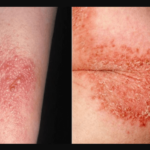

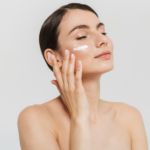
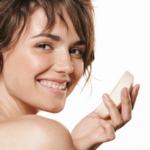
![Read more about the article Hot Spoon Mosquito Bite Treatment [Does It Help and How To]](https://skincaregeeks.com/wp-content/uploads/2021/05/hot-spoon-mosquito-bite-300x200.jpg)
